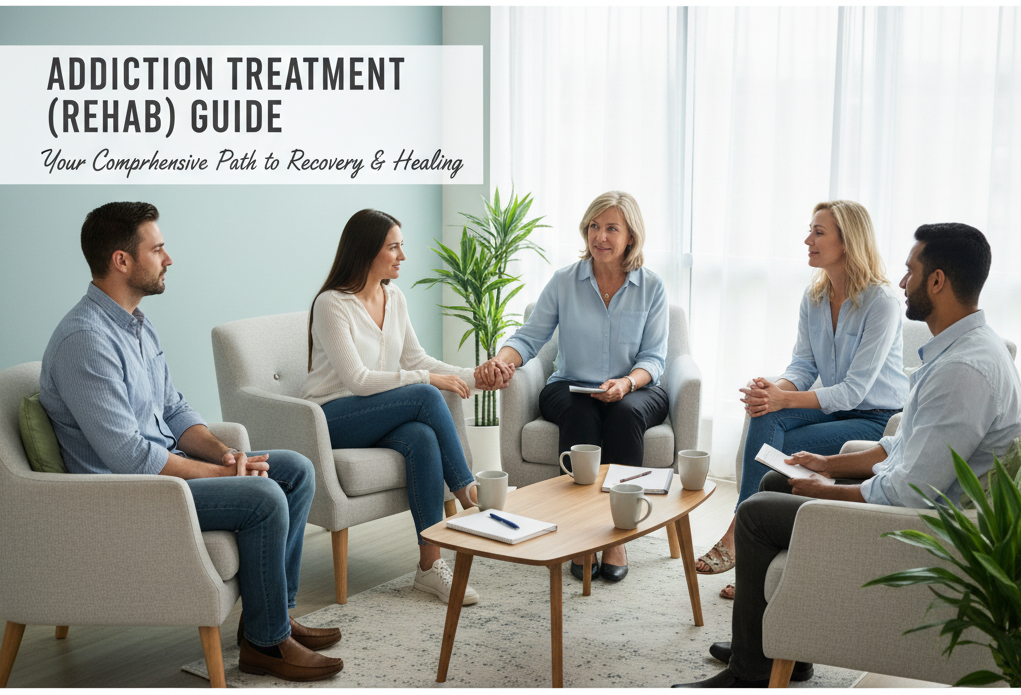In order to assess and compare rehabs, it is advised to the experts that the program must preferably meet some evidence-based criteria. The 11 most important ones include individualized assessment, combined mental health care, medical detox, certified personnel, ongoing care, outcome measurement, family engagement, patient retention, aftercare, and accreditation. When analyzing programs, ask yourself whether they individually cover each of these things.
1. Assessment & Treatment Matching
Treatment of alcohol or drug use disorders begins with a good and correct screening procedure. This involves an assessment of many substance use disorders and comorbid mental or physical health disorders, as well as any other concerns. Following a screening, an in-depth evaluation is performed to examine the substance use history, medical and psychiatric history, family and social support network, and recovery resources available to the individual, otherwise known as recovery capital.
2. Comprehensive, Integrated Treatment
As it was stated above, patients under treatment can also suffer co-occurring disorders like depression or anxiety, as well as medical problems like hepatitis C, liver disease, or sexually transmitted infections. The effective programs are supposed to offer integrated care that meets these other needs or secure good links to the proper healthcare services.
3. Assertive Linkage to Continuing Care
Continuing care is the current support given to those people that have some chronic or long term illnesses. It stresses on providing recovery-related social assistance and the necessary services that will help sustain progress and stability once the individual has left or graduated the first stage of treatment.
4. Dignified & Respectful Environment
A treatment program must be of equal quality and professionalism as other medical environments, as in oncology or diabetes care. Luxury facilities are not required; however, the facility must be clean, bright, welcoming, and comfortable.
5. Significant Other &/or Family Involvement
When significant others and loved ones are engaged in the treatment process, the probability of continued participation and long-term recovery is much higher. Similar strategies of making roles in a family clear, reframing behaviors, building management skills, promoting healthy boundaries and monitoring, re-intervention planning and reaching out to community resources are some of the strategies that can be used together to strengthen family system.
6. Employ Patient Retention Strategies
Half of those in addiction treatment nationally drop out in the first month. The result may be worse in the case of early dropout, and it is necessary to employ the strategies that will encourage engagement and retention. Communication in a safe environment and a transparent attitude to rules and regulations of the program, as well as expectations of the participants in the process, can greatly increase the success of the treatment.
7. Use of Evidence-based Practices
Evidence-based programs follow the best practices that have been proven to be successful through programs that tend to yield better results. With psychological therapies, effective treatment must have access to FDA-approved addiction medications (buprenorphine/naloxone, methadone, naltrexone, depot naltrexone, or acamprosate) and psychotropic medications to co-occurring mental health issues (SSRI and others).
8. Qualified, Well-trained Staff
The team, involving professionals working in the field of addiction treatment, medicine, psychiatry, and spirituality, can assist individuals to recognize and cover a broad scope of needs that facilitate recovery and the general state of mental health. Higher quality of care is commonly reflected in programs that have professionals working in advanced degrees and having the appropriate licensing or board certification in the respective fields.
9. Individualized Care & Personalized Approaches for Special Populations
Treatment should start with an assessment that is both careful and personalized so as to identify the needs and circumstances of every individual. A single method of recovery does not exist, and one technique will not be effective for another person. Quality treatment programs have taken into account aspects like gender, age, culture, and community identity in order to develop specific treatment and recovery plans.
10. Measurement of Program Performance
The other indicator of quality care is that the measurements used to monitor the response of patients to treatment are reliable and valid. Similar to hypertension care, where blood pressure is regularly checked, addiction treatment programs must be able to check the addiction and mental health vital signs to determine whether the treatment is effective or it should be adjusted.
11. External Accreditation
The accreditation of the facilities by reputable external regulatory bodies and programs that are licensed by the state is required to ensure that the facilities meet the needed standards when providing evidence-based care.

